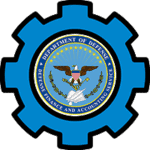Your Roadmap to Risk Reduction!
The Continuum GRC ITAM SaaS platform has hundreds of plugin modules available, such as:

Defense Federal Acquisition Regulation Supplement (DFARS) and NIST 800-171 800-172
Continuum GRC is completely committed to you and your business’ Defense Federal Acquisition Regulation Supplement (DFARS) and NIST 800-171 & 800-172 audit success. Regardless of whether you represent the private sector or the public sector, we stand ready to partner with your organizations.
Modules include:
- DFARS NIST 800-171 System Security Plan (SSP)
- DFARS NIST 800-171 Security Assessment Report (SAR)
- DFARS NIST 800-172 System Security Plan (SSP)
- DFARS NIST 800-172 Security Assessment Report (SAR)
- Federal Information Processing Standard (FIPS) 199 Categorization
- Plan of Action and Milestones (POA&M)
The NIST Compliance Audit Process
NIST compliance involves protecting controlled unclassified information within a cybersecurity environment. The audit looks at the specific systems, processes, and kinds of data the organization is involved with, and whether their framework is maintaining compliance with those precise security regulations and guidelines.
This all begins with a review of the current security practices as well as risk assessment and analysis. Security controls around your networks, like access control and incidence response measures, are evaluated. All of this is gathered as evidence and thoroughly documented.
Recommendations are then made for improvements or remediation to achieve NIST 800 171 compliance.
Benefits of Being NIST Compliant
Compliance offers a clear, structured approach to managing your cybersecurity and related threats in a much more efficient manner. Your cybersecurity posture is greatly strengthened and you’ll have a much more proactive way to prevent potential threats (and recover if they happen).
Achieving this level of regulatory compliance aligns you with the security needs of various organizations around HIPAA and FISMA, opening new opportunities and providing a competitive advantage. You and your staff will have a better way to communicate clearly around these important cybersecurity measures, build trust with your clients, and manage risks more effectively.
Audit and Accountability
Undergoing a NIST audit provides a comprehensive look at the elements surrounding your cybersecurity posture. It reviews systems and processes for communications protection, beginning with a thorough risk assessment solution. How are you set up to monitor potential threats? What are the procedures to address them? What’s the plan to recover from a data breach and who’s in charge? Who has access to this most sensitive data and what is their authorization?
An audit to achieve compliance with NIST standards is meant to streamline your security process and ensure that it’s as up-to-date as possible to avoid (or recover from) cyber attacks.
Identification and Authentication
The process for becoming NIST 800-171 compliant offers an opportunity to clearly identify key systems, processes, and personnel as a way to better manage security. Everything from monitoring and reporting, to how threats are identified and remediated are methodically documented. That kind of precise communication ensures a seamless process for handling and maintaining sensitive information. It prevents gaps in the organization’s operation, and builds trust among all stakeholders.
Implementing the guidelines and standards to achieve NIST compliance makes handling complex cyberthreats much simpler and efficient. It improves your security posture with clearly identified roles and responsibilities.
FAQ
Who does NIST 800-171 apply to?
NIST SP 800-171 cybersecurity requirements apply to any contractors or non-federal organizations that handle Controlled Unclassified Information, or CUI. This means processing, storing, transmitting, or protecting this kind of information. This can include cloud providers who work with federal agencies or universities that receive grants or contracts that include CUI.
What is included in a DFARS/NIST compliance audit?
Defense Federal Acquisition Regulation Supplement (DFARS) applies the cybersecurity standards determined by NIST to any of the goods and services used by the Department of Defense. These products must be able to securely handle sensitive information. The audit review security controls and compliance standards in equipment, media, and the like.
How does DFARS relate to NIST 800-171?
DFARS and NIST are both related to cybersecurity around the handling of Controlled Unclassified Information (CUI). Both require contractors with the Department of Defense to utilize specific standards and practices; DFARS relates more to the acquisition of equipment and other physical products. Those must meet the security standards.
What is a Plan of Action and Milestones (POA&M)?
This document identifies any weaknesses and vulnerabilities in an organization’s security posture, and then prioritizes how each should be addressed and mitigated through specific steps. The milestones are part of this timeline, working through the most important security gaps first in a structured, methodical way.
How does CMMC relate to NIST 800-171 and DFARS?
Cybersecurity Maturity Model Certification (CMMC) is connected to NIST 800-171 and DFARS as a program that ensures that defense contractors comply with the specific security controls outlined by NIST and DFARS publications. It’s a set of unified standards that makes it clear what’s expected in cybersecurity protection.
What’s the difference between NIST 800-171 and 800-172?
Think of NIST 800-171 as the baseline cybersecurity requirements for protecting Controlled Unclassified Information (CUI) in non-federal systems. NIST 800-172 takes it up a notch, adding another layer of protection (like penetration-resistant architecture and cyber resiliency) to counter more advanced security threats against high-value assets or critical programs.
What are you waiting for?
You are just a conversation away from putting the power of Continuum GRC to work for you.
Contact us using the form below or calling us at 1-888-896-6207 for immediate assistance.